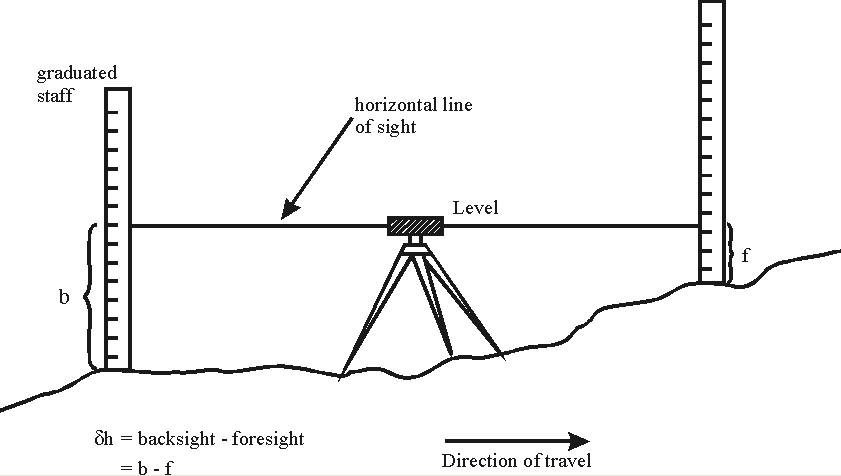Principle of Differential Levelling
Differential levelling provides a means of accurately measuring height differences between points some metres apart. A level is set up on a tripod and levelled so that the line of sight is horizontal:

A graduated staff is held vertically over the first point and a reading made of the intersection of the cross-hair with the image of the staff (backsight - b). The same (or an identical) staff is then held vertically over the second point and a further reading made (foresight - f). The difference between the two readings is the difference in height between the two points: &h = b - f
If b is greater than f then &h is positive (i.e. there is a rise in elevation in moving from the first to the second point).
This process can be repeated - the level can be moved to beyond the second point and the height difference between the second and a third point measured by the same process. Further repetitions will allow the height difference between widely separated points to be determined by accumulation.